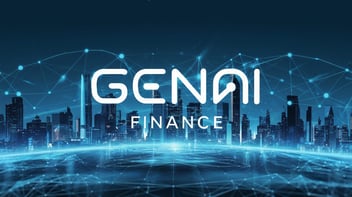Introduction
Generative AI is transforming the financial services landscape, offering unprecedented opportunities to drive innovation, enhance operational efficiency, and gain a competitive edge. As the industry faces rapid technological shifts, the adoption of AI solutions is no longer just an option—it’s a strategic necessity. This article delves into the strategic framework for generative AI adoption in financial services, highlighting the role of accelerator programs, collaboration with startups, and a phased approach to AI integration. By embracing generative AI, financial institutions can not only streamline their operations but also unlock new avenues for growth and innovation.
FinLabs and Accelerator Programs: Fostering AI Innovation
Many financial services firms are turning to FinLabs and accelerator programs to foster AI innovation. These programs bring together established institutions and startups to drive new AI solutions that address pressing industry challenges..
Mentorship and Funding: Accelerator programs offer startups mentoring, resources, and financial backing. This support accelerates the development of AI-driven solutions tailored to the financial industry,
allowing for rapid innovation.
Phases of Generative AI Implementation
To fully harness the benefits of generative AI, financial institutions need a structured approach to AI adoption. This process typically involves three phases:
Phase 1: Identifying Opportunities
Spotting the right opportunities for AI integration is the first step toward a successful implementation. Techniques for identifying AI opportunities include:
Workshops and Brainstorming: Cross-functional workshops help identify business areas where AI can have the greatest impact.
Competitive Analysis: Studying how competitors have successfully implemented AI solutions can offer valuable lessons and best practices.
Phase 2: Aligning and Prioritizing Goals
Once opportunities are identified, the next step is aligning those opportunities with organizational objectives.
Stakeholder Engagement: Involving key stakeholders throughout this phase ensures that AI initiatives are aligned with diverse organizational needs and goals.
Phase 3: Executing and Integrating Solutions
The final phase involves the technical execution and organizational integration of generative AI solutions.
The Future of Generative AI in Finance
The organizations that stay ahead of the curve will be those that integrate AI strategically, foster innovation through accelerator programs, and align AI initiatives with their long-term goals.
Conclusion
Generative AI offers financial institutions the tools to innovate and remain competitive in a rapidly changing environment. Through structured implementation and collaboration with tech startups, financial services firms can lead the way in adopting AI solutions that drive
sustainable growth and operational excellence. Those who strategically invest in AI today will be best positioned to shape the future of finance, transforming not only their own operations but the broader industry as well.
Facilitating AI Integration with Pacific Data Integrators (PDI)
Integrating Generative AI and Large Language Models (LLMs) into finance can seem daunting, but with Pacific Data Integrators (PDI), it becomes a streamlined and supported journey. Partnering with PDI ensures a seamless transition and enduring success, turning challenges into opportunities. Discover how PDI's tailored solutions can transform your business by consulting with our experts today.
You can book a consultation today by visiting us at PDI.
Posted by PDI Marketing Team
Pacific Data Integrators Offers Unique Data Solutions Leveraging AI/ML, Large Language Models (Open AI: GPT-4, Meta: Llama2, Databricks: Dolly), Cloud, Data Management and Analytics Technologies, Helping Leading Organizations Solve Their Critical Business Challenges, Drive Data Driven Insights, Improve Decision-Making, and Achieve Business Objectives.






